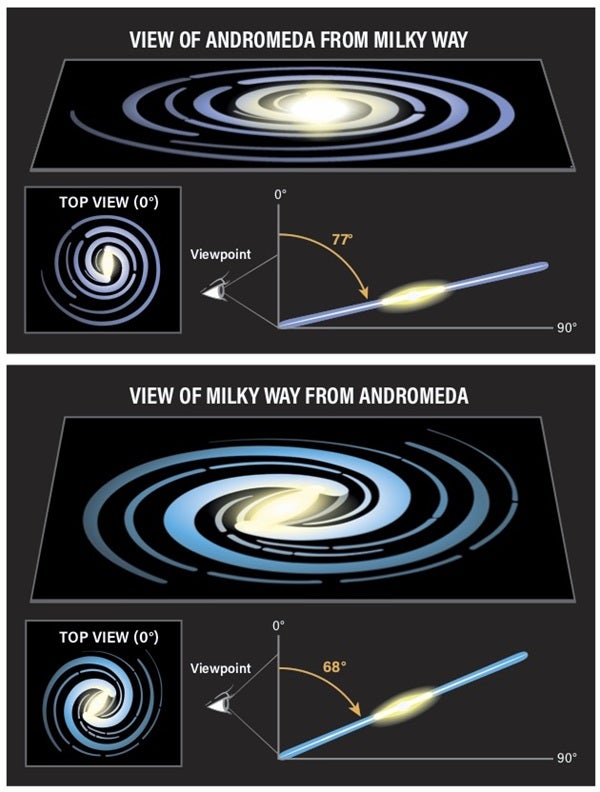A: The inclination angle of a galaxy is defined as the orientation of its stellar disk relative to the line of sight of an observer. A galaxy with an inclination angle of 90° is viewed edge-on, whereas a galaxy with an inclination angle of 0° is viewed face-on. Andromeda has an inclination angle of about 77° — meaning, as you said, we see it nearly edge-on.
To determine the inclination angle of the Milky Way from the perspective of Andromeda, we need to know where Andromeda is located relative to the Milky Way. On a clear, dark night, the disk of the Milky Way in which we live is visible as a band of stars cutting across the sky. Turning away from the galactic center to its opposite, the anticenter — located in the constellation Auriga — you would find the Andromeda Galaxy just a bit to the west and about 2.5 million light-years away. This means that for any hypothetical inhabitants of Andromeda, their line of sight to us is close to the plane of the Milky Way’s disk.
If those inhabitants also live in Andromeda’s stellar disk and near the center of the galaxy, the Andromedans would see the Milky Way at an inclination angle of about 68°, similar to our view of their galaxy. This means that they would see the Milky Way close to edge-on — although not as edge-on as we in the Milky Way see Andromeda.










